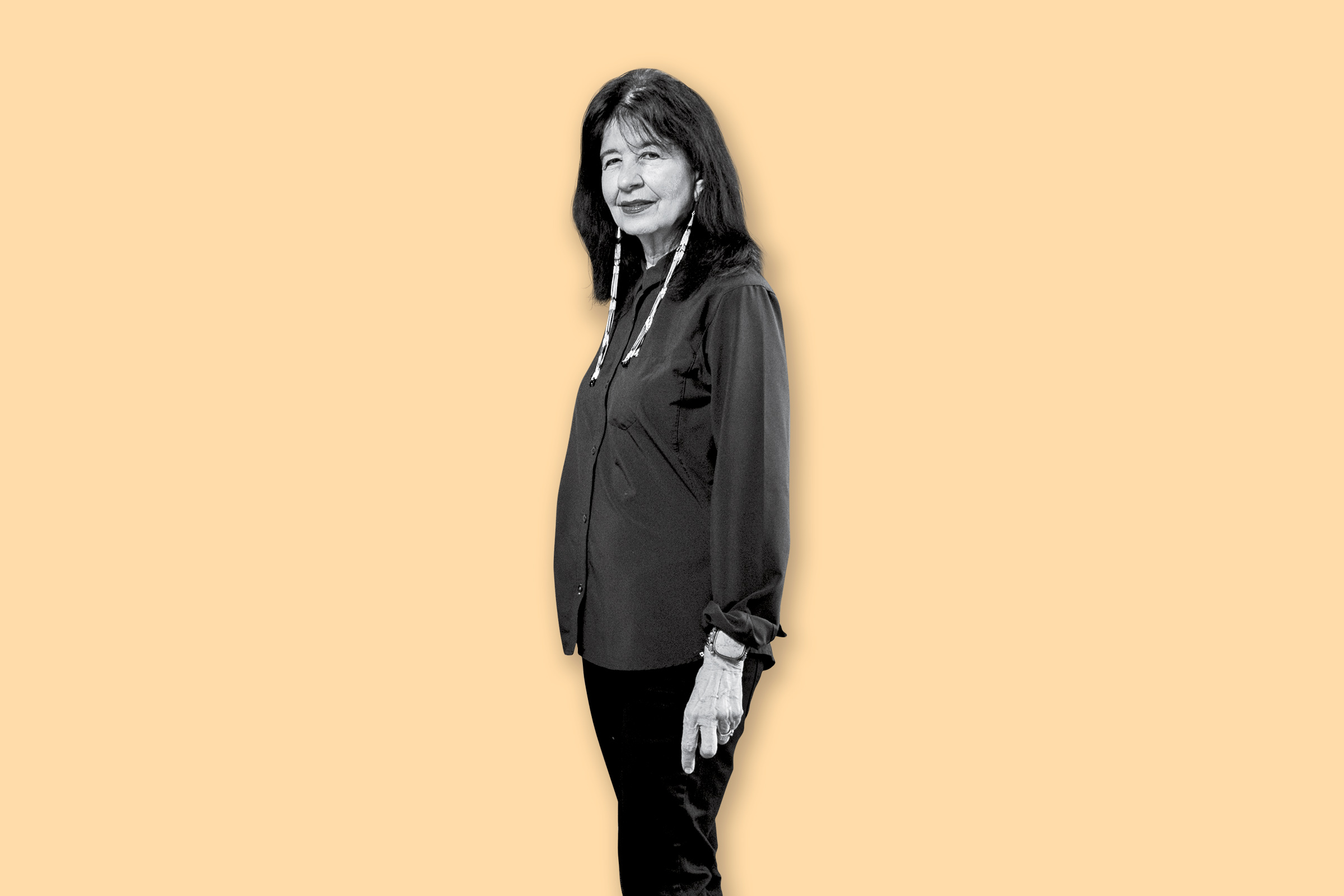
Joy Harjo, the first Native American U.S. poet laureate, tells TIME about her new book, ‘An American Sunrise,’ and the state of poetry.
You found your voice as a poet in 1973, a time when a lot of Americans found theirs. How much was that a factor?
I didn’t set out to be a writer. I was shy, quiet, and I loved art because I didn’t have to speak with anyone. At one point, my spirit said, “You have to learn how to speak.” I think poetry came to me because there was a lot of change. In 1973, I was 23, a mother of two children, and I was in a very active Kiva club [that was raising awareness about Native American issues] during the native-rights movement. We were dispersed Americans, totally disregarded, and I felt our voices needed to be heard. I started writing poetry out of a sense of needing to speak not only for me but all Native American women.
What do people get wrong about Native Americans?
A lot of images [of Native Americans] are based on fairy tales or Wild West shows. We are human beings, not just people who have been created for people’s fantasy worlds. There’s not just one Native American. We’re diverse by community, by land, by language, by culture. In fact, we go by our tribal names, and there are 573 tribal nations.
Do you write every day?
I’m often writing something almost every day. I keep journals: one on the computer, one for dreams, one for general observations and overheard things, and one for learning jazz standards, so I look up the history of the song, then I rehearse it and make notes.
What time of day do you write best?
When the airwaves are clear, either really early–like 6 a.m., 7 a.m., before anything is said–or really late. It’s important to have a doorway open to the place without words, and that happens more easily when you’ve come from dreaming.
What advice would you give poets?
It’s about learning to listen, much like in music. You can train your ears to history. You can train your ears to the earth. You can train your ears to the wind. It’s important to listen and then to study the world, like astronomy or geology or the names of birds. A lot of poets can be semihistorians. Poetry is very mathematical. There’s a lot in the theoretical parts that is similar. Quantum physicists remind me of mystics. They are aware of what happens in timelessness, though they speak of it through theories and equations.
What history inspired An American Sunrise?
It came directly out of standing and looking out into the woods of what had been our homelands in the Southeast before Andrew Jackson removed us to Indian territory. I stood there and looked out, and I heard, “What did you learn here?”
What are your plans as the poet laureate?
I can remind people that they use poetry, go to poetry, frequently, and may not even know they are. A lot of song lyrics are poetry. They go to poetry for a transformational moment, to speak when there are no words to speak.
As a singer and saxophonist in the Arrow Dynamics Band, do you plan to incorporate music in the role?
I always play or perform music with my poetry. When poetry came into the world, it did not arrive by itself, but it came with music and dance.
How would you describe the state of poetry?
Audiences for poetry are growing because of the turmoil in our country–political shifts, climate shifts. When there’s uncertainty, when you’re looking for meaning beyond this world–that takes people to poetry. We need something to counter the hate speech, the divisiveness, and it’s possible with poetry.
More Must-Reads from TIME
- Donald Trump Is TIME's 2024 Person of the Year
- Why We Chose Trump as Person of the Year
- Is Intermittent Fasting Good or Bad for You?
- The 100 Must-Read Books of 2024
- The 20 Best Christmas TV Episodes
- Column: If Optimism Feels Ridiculous Now, Try Hope
- The Future of Climate Action Is Trade Policy
- Merle Bombardieri Is Helping People Make the Baby Decision
Write to Olivia B. Waxman at olivia.waxman@time.com